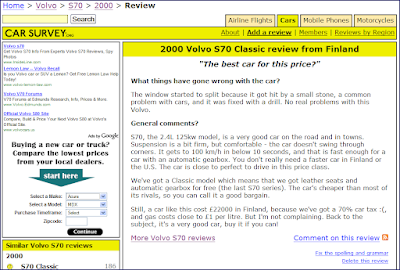Google AdSense, Google's advertising program that lets webmasters display ads from Google's extensive list of advertisers, has taken the Internet by storm. Through this successful program, unobtrusive text-based ads are served in member sites, who then earn a commission every time someone clicks on the advertisers' links.
At this point in time, the jury is still out on whether this program will continue to enjoy its initial success. That is why, through this article, we want to give you some highlights and insights on how the Google Adsense program has worked for us, one month after we signed up for it, so that we can use it as a checkpoint for future analysis.
Generate revenue from your website. Google AdSense.
Why is Google AdSense so Popular?
Google AdSense uses Google's proprietary PageRank™ search technology to deliver ads that are highly relevant to the content of a page. Google's engine will scan through the content of the page to determine its topic, and will then serve ads that are relevant to the page's content.
Running Google AdSense is simple and straightforward: Google gives you a snippet of HTML code that you can paste in the desired location on your page, and the ads start appearing immediately after you upload the changes to your server.
However, Google AdSense's main claim to fame is that, by displaying text-based ads, it is able to deliver much higher click-through rates than traditional graphic banner ads. As usability studies have widely shown, users are already conditioned to ignore banner ads (or anything else that looks like them). As a result, banner ad click-through rates have dropped below a dismal 0.5% (in other words, it takes 200 page views, on average, to get someone to click on a banner ad).
By using text based ads instead of graphic banners, Google has been able to overcome banner ad blindness, delivering click-through rates that are much higher than the industry's average (some put the figure around the 1.5% mark).
This site recommends Google AdSense for targeted ads
How much can you expect to earn by running Google Ads on your site?
The pay-off per click varies widely depending on what each advertiser decides to offer, based on the profitability of their products and their expected conversion rate (percentage of clicks that deliver a sale). Google is not saying what the average pay-off is nor how does it share the revenue per click with their AdSense partners, but how much you will earn per click will really depends on the topic and the product being advertised. Products with profit margins of $3.00 for the advertiser will probably give you a smaller pay-off per click than a product with a $300 profit margin. Similarly, ads with high conversion rates will normally give you higher payouts than less effective ads, since they can afford to pay more dollars per click, with a portion of that money going to you.
So, just for the sake of giving an example, lets say that your site receives 1,000 page views per day. At a 1.0% click-through rate and $0.50 pay-off per click to you, in a 30-day month you can expect to make:
1,000 x 30 x 1.0% x $0.50 = $150
The more traffic your site has, the more clicks (and the larger the pay-off) you will get.
Will Google's AdSense continue to be successful?
This is the big question, and nobody has a definite answer yet.
On the downside:
- The program will most likely face strong competition from other search engines in the near future.
- The proliferation of text based ads could make users "text-ad blind" the same way as they have already become "banner-ad blind", causing click-through rates to drop.
- There is always the potential for abuse, since some unscrupulous program members may violate the program's rules and click on their own ads, inflating the advertisers' click-through rate and forcing them to decrease their pay-off per click.
On the positive side, I believe that Google AdSense's success is not only due to the fact that they deliver text based ads instead of banners, but because those ads are served by Google. The credibility and brand equity that Google enjoys is huge, and I expect them to continue to beat other search engines and advertising networks that may eventually jump on the bandwagon.
However, it is reasonable to expect at least a slight decrease in click-through rates and pay-off as a result of the increased competition.
For tips and tricks on how to maximize the return of your AdSense program, you can read The Definitive Guide to Google AdSense, by William Charlwood, the complete step by step road map for making and maximising your income from Google's AdSense program.






